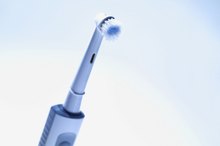How to Repair Littmann Stethoscopes
3M™ Littmann® stethoscopes are known for their quality and reliability. **But accidents, time and neglect can cause wear.
If you are experiencing serious medical symptoms, seek emergency treatment immediately.
If your stethoscope is still under warranty you can send it off to Littmann for free repair 12. ** All models are warranted for at least two years and some up to six years.
If you prefer to try your own repairs, Littmann offers a whole host of replacement parts including binaurals, ear tips, non-chill bell sleeves, rims, tubing, diaphragms and special procedure adapters. To save you time and money, make sure you are using the stethoscope properly before determining if it is actually in need of repair 2.
Remove the ear tips, binaurals and the chestpiece assembly from the tubing. Twist and pull to free these parts. Discard worn ear tips and cracked tubing. Internal cracks caused by frequent bending of your stethoscope or carrying it around your neck will not be apparent 2. Chances are you’ll need new tubing if the acoustic performance of your stethoscope has diminished 2. Exposure to extreme heat and cold can also damage tubing.
How Can I Tell If My Heart Rate Monitor Needs a New Battery?
Learn More
Clean the metal binaurals. Wipe them with a soft micro-fleece cloth. Blow pressurized air through the internal cannula to remove dust. Use a rigid plastic tube attachment if available. Use focused bright lighting to verify that no obstruction remains inside of the binaurals. Wipe again to remove any remaining dust.
Remove the rim and diaphragm cover of the stethoscope 2. Grip the diaphragm with one hand and gently twist the rim off. When you feel it give slightly, pull the rim away from the diaphragm. The cover will also come off. For double-sided stethoscopes do the same on the reverse side.
Knots Used to Repair Fishing Net
Learn More
Examine the diaphragm cover. Check for moisture on the inside of the cover and look for small cracks. Wipe the rim and cover and set aside if it's in good condition. Replace these items if necessary.
Look at the inside of the diaphragm. Wipe moisture and dust away. You may see what appears to be corrosion or green goop. This is probably old lubricant. Use a lint-free Q-tip to clean the center hole and around the rim, both inside and out. Use the pressurized air to clean out the diaphragm. Force air into the center hole and through the metal tubing arm. Give it a final wipe.
Apply a thin coating of medical instrument lubricant to the rim of the diaphragm. This will aid in providing an acoustic seal between the moving parts of the instrument. Application bottles deliver only minute quantities per application. Wipe up any excess lubricant.
Assemble all replacement parts and reattach them.
Tips
Improper wear or fit of a stethoscope can make you think it needs repair.
Related Articles
References
Tips
- Improper wear or fit of a stethoscope can make you think it needs repair.
Writer Bio
Erin Moseley is an advocate for science education. Since 1985, she has written numerous technical, user and training manuals for major corporations, public agencies and universities. She holds a Bachelor of Science in geology.









